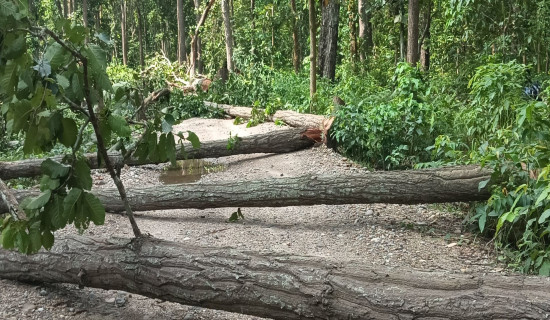- Saturday, 13 September 2025
Yak Farming Potential
Panchthar local levels’ initiative to revive yak husbandry is commendable. By virtue of being a mountainous district, Panchthar’s elevated topography and cold climate highly favours yak farming and its niche yak products can popularity in the market. For people in the mountainous region, yak is much more than an animal-- it’s inextricably linked with their life, livelihood, and culture. The cheese prepared from Himalayan yak milk, and chhurpi (hard cheese) have been enjoying a growing popularity in the domestic and international market. Nepal can earn a significant foreign currency from its export. Because the region lacks arable land and offers limited trade opportunities, animal husbandry has been the mainstay of this mountainous region.
Chhurpi has also been gaining popularity as dog chew, which has emerged as one of the country’s top exports. Demand for dog chew in the West, especially the USA and Canada, saw a steep growth during the Covid-19 pandemic when people there bought more pets and the trend has continued – to the delight of the exporters and farmers alike. What makes Nepali dog chew more attractive, experts say, is that they have no problems like staining and odour in comparison with other pet food. In the last fiscal year, Nepal exported dog chew worth Rs. 2.53 billion, and, for this year, that figure is on track to surpass Rs. 3 billion, according to the official data.
Not only is chhurpi organic, produced from the finest milk from yak that exclusively graze on herbs and grass in the unpolluted high alpine regions, it is also considered quite healthy and nutritious because of its low fat content and high protein value. Buoyed by such promising signs, many migrant workers have returned to their homes from abroad in the eastern Himalayan and hilly districts to embark on the venture of livestock farming. One of the areas they are focusing is yak rearing which has potential of commercialising the products such as cheese, chhurpi, ghee (refined butter) and yak wool.
Many of the foreign returnee with enterprising spirit say that things have now become favourable for animal husbandry. They attribute this to development of roadways, which has enabled them to transport their ghee, cheese, milk, and other produces to the market for sale. Development of communication technology has also eased the problem of doing business to a significant extent. And, with the availability of veterinarians, farmers feel reassured that their animals will get needed treatment when they fall sick.
Making things even sweeter, to address challenges like wild predator attacks, export issues, market bottlenecks, and disease threats, Phalelung Rural Municipality in the district, has even started programmes to support yak breeding and a yak festival. Moreover, agencies at the provincial and federal levels, in partnerships with the veterinary hospital, local government bodies across all three tiers have offered grants for materials to support growth and promote yak farming and related industry. Treatment and insurance policies in the case of disease has elevated farmers’ confidence to stay in the business. What’s more, with the boom in yak tourism, people there are finding new sources of livelihood. The district should go ahead and revive yak husbandry to its former glory.

















